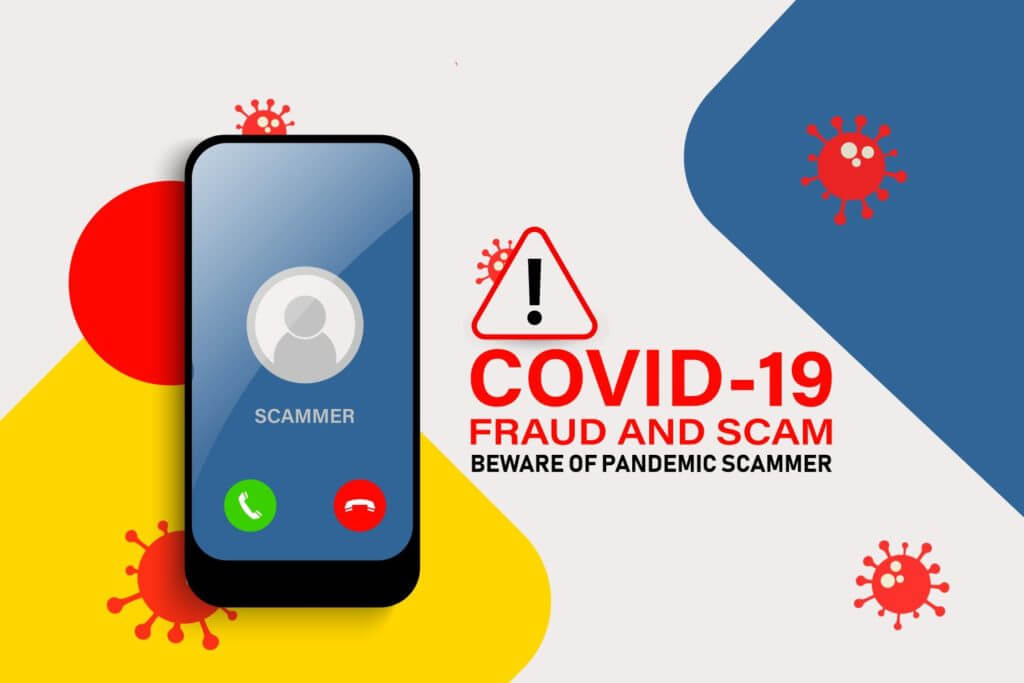Cybercrimes On The Rise During Covid-19 Lockdown Period
COVID-19 has been nothing short of a disaster for much of the world. Just when you think dealing with the complications of a deadly disease is enough, another sinister enemy appears, “cybercriminals.” During the worldwide lockdowns, much of the world has turned to the internet for work, shopping, leisure, and more. Unfortunately, so have the scammers.
Cybercrimes have risen exponentially during the COVID-19 lockdown period. Online criminals have honed their skills and began an all-out assault on businesses, individuals, and governments alike. With this information in mind, it’s essential that you understand the threat, what to do about it, and how to decrease your chances of becoming a cybercrime victim. As we enter 2021, and with more people turning to the internet than ever before, it’s important to be vigilant and alert for potential cybercrimes that could be committed against you.
COVID-19 Cybercrimes Statistics
According to the Federal Bureau of Investigation (“FBI”), cybercrime complaints are up more than 400% compared to pre-pandemic numbers. With more than 4,000 new cybercrime complaints coming in per day, you can reasonably assume that the number of actual online crimes being committed is much higher.
The threat cybercriminals pose is significant and includes the following sobering statistics:
- Ransomware attacks are up nearly 800% during the pandemic
- Phishing (attempting to obtain sensitive information through false identity) attacks occur 20-30k times per day
- Fictitious requests for charitable funds are up exponentially
- 60 percent of fraud examiners worldwide expect a significant increase in cyber fraud risk over the next year
- Large-scale data breaches have increased by more than 270% in comparison to pre-pandemic numbers
Understanding the Different Types of Cyber Attacks

It can be challenging to comprehend the dangers of cyberattacks without first knowing how online criminals operate and their tactics. Listed below are a few of the most common types of cyberattacks occurring during the pandemic.
- Malware: This term describes different types of malicious software such as spyware, ransomware, viruses, etc. Generally, malware breaks through a network via a vulnerability. The most common scenario is an individual clicking on a link or attachment in an email that installs malware on their computer.
- Phishing: A form of social engineering, the most common phishing scams occur when a cybercriminal sends a fictitious email (that looks authentic) to an individual in the hopes of obtaining credit card information, login credentials, or to install some type of malware.
- Man-in-the-Middle: MitM attacks occur when a criminal intercepts your internet traffic to steal data. They typically use networks like unsecured public Wi-Fi to install malware and steal as much information as they can.
The cyberattacks mentioned above are not the only type of crimes to be aware of. There are many others like denial-of-service attack, SQL injections, zero-day exploit, and DNS tunneling.
If all these terms are somewhat confusing to you, you’re not alone. While it can be beneficial to learn the ins and outs of cybersecurity, it’s not as important as knowing what to do to keep you, your information, and your business safe from online criminals.
How To Protect Yourself From Cybercrimes
Cybercriminals work around the clock. They operate in every country. Typically, they search for sensitive information that exposes bank accounts, logins, and other sensitive data they can exploit for financial gain. Taking a few relatively simple steps to protect yourself can be the difference between a successful attack and an unsuccessful attempt.
Strong Passwords
The days of using the same password for all your accounts are over. Doing so can make you and your business incredibly vulnerable to online attacks. While having a strong password doesn’t guarantee you won’t be hacked, it does exponentially decrease the likelihood of it happening. A few tips to keep in mind when creating passwords include:

- Make your passwords more than 15 characters.
- Include numbers, upper-case, lower-case, and symbols.
- Stay away from common phrases, names, keyboard paths, or words.
- Try using long phrases or short sentences that only you would know.
- Use a password manager and a password generator.
- Use multi-factor authentication when possible.
Update Your Software Regularly
You may be tired of those pesky software update reminders. However, they are a necessary evil. Software updates patch known security flaws and protect your data. Neglecting to update your software regularly could leave you, your family, and your business more vulnerable to cyberattacks.
Manage Your Privacy Settings on Social Media
Most people are aware of the privacy settings on popular social media sites like Facebook, Twitter, LinkedIn, and similar sites. However, many still don’t take advantage of the privacy settings to shield their accounts from potential criminals.
Be sure to regularly check and update your privacy setting on all social media sites you use. That’s true even if you don’t log on often.
Stay Updated on Security Breaches
Cybercriminals are not just targeting individuals and small businesses. They’re also going after “fortune 500” companies, multi-national organizations, government and many more large targets. Staying updated on security breaches can help you learn when you’re information may have been compromised. It also allows you to take the necessary steps to rectify the problem.
Be Careful Who You Give Your Information To
This sounds like a “no-brainer.” However, it’s a lot easier to give your information to a cybercriminal than you think. Be careful of the e-mails and social media messages you open.
If a company asks you for sensitive information to “confirm” your account, contact the company to be sure they are who they say they are. Remember to keep your phone locked and log out of all accounts when you’re done using them.
This Is A Time To Be Vigilant
Unfortunately, when times are difficult, criminals seek to take advantage of the vulnerable. Recognizing that being careless on the internet can open you up to being the victim of fraud or identity theft is important and will protect you. While there is no such thing as 100% safety, employing many of the tips mentioned in this blog will significantly decrease your chances of being the victim of a cybercrime.
